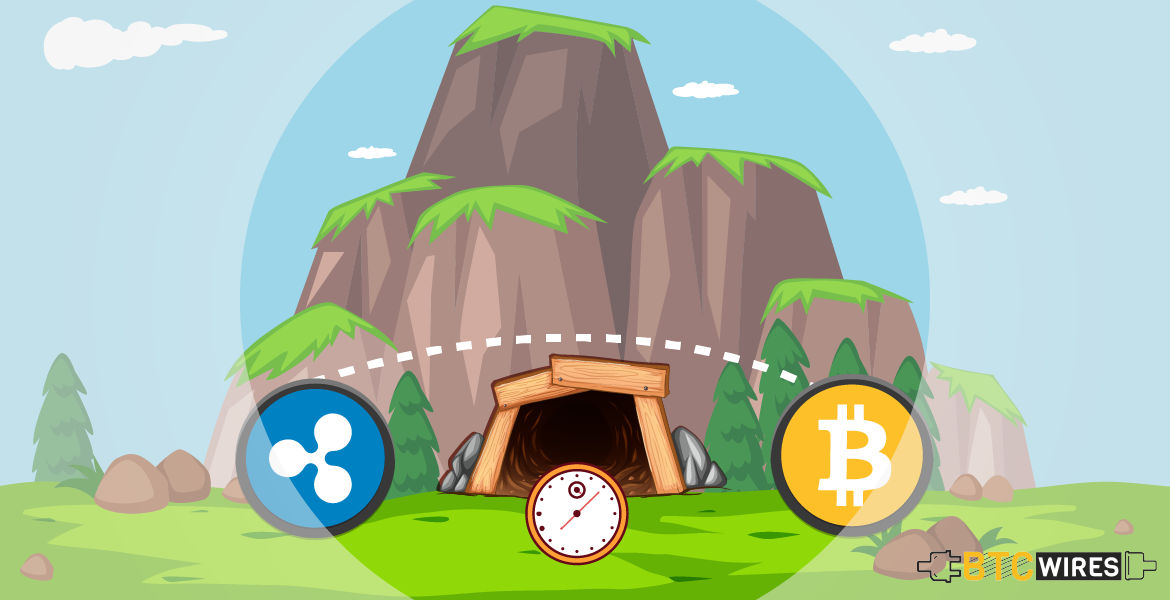Block time refers to the time taken for mining a

Block time refers to the time taken for mining a single block of the cryptocurrency or verifying all the transactions present on a single block.
Cryptocurrency network works on the principle of Distributed Ledger, with Blockchain Technology underneath. As the name suggests, Blockchain is a chain of blocks which are codependent on each other, and one can move to the next block only after the previous one has been mined or verified.
Block time is dependent on various factors, we will discuss these in detail below to understand how the blocks on a network function.
You May Also Read: How Bitcoin Mining Works?
How Block Time is Determined?
As we know, the mining concept is only applicable to those cryptocurrency which uses proof of work(PoW) protocol. As the number of blocks on the network increases, the level of difficulty increases too, but the block time is kept constant by varying the Difficulty level.
The Block Time is always kept a constant, to make sure the power input cannot be manipulated which might lead to a total disruption of the network.
The average block time of the network is evaluated after n number of blocks, and if it is greater than the expected block time, then the difficulty level of the proof of work algorithm will be reduced, and if it is less than the expected block time then the difficulty level will be increased.
You May Also Read: Can you Mine Bitcoin on Your Mobile Phones?
Difficulty Level
The difficulty level is a dynamic variable which plays a very important role in keeping the block time constant. We will take Bitcoin as an example to understand how block time is kept a constant.
Bitcoin Block Time is fixed at 10- minutes, with only the genesis block as an exception, which took almost 5 days to be mined.
Now, let us assume that the Block time required to mine the last 2016 blocks on the Bitcoin network is only 8 minutes, a 2-minute earlier than the fixed 10-minute slot. Now the difficulty constant would be increased more than one, to achieve the 10-minute mark.
If the mining difficulty increases and the blocks require more than 10 minutes to mine, in that case, the Bitcoin developers can bring the difficulty factor below 1 to achieve the 10-minute mark.
The Difficulty Factor calculator,
new_difficulty = old_difficulty X (2016 blocks X 10 minutes) / (the time took in minutes to mine the last 2016 blocks)
The Block time always remains a constant, as per the demand for maintaining a distributed network of cryptocurrency. However, this has led to an ever-increasing rate of difficulty since the Genesis Block get mined.
Again taking Bitcoin as an example, where the difficulty level increases after every 2016 Blocks or 2 week time.
If we consider the difficulty level of the first block as 1 the current difficulty level has reached 678,760,110,083. So if we put in same Hash power as it was required for mining the first block, it would take 678 Billion times to mine the current Bitcoin block.
The increasing difficulty level is a direct result of ever exploding mining community, plus the mining rigs are getting more powerful every day. Earlier only CPU and GPU based mining were the hot trends, however, looking at the current rate of mining, ASIC based rigs are more preferable than others.
You May Also Read: Top Bitcoin Mining Pools of 2019
Conclusion
Block Time is always kept a constant to maintain the decentralization aspects and avoid any kind of block manipulation. With fixed time, you can never put in a ton of hash power and try to mine the block earlier than others.
As the number of blocks on the number increases the mining difficulty will be increased accordingly to maintain a fixed time, be it Bitcoin or any other Altcoin, the Block Time will remain a constant.
Here Are A Few Other Articles For You To Read Next:
